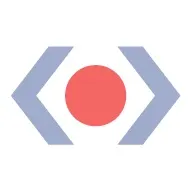Black Lives Matter
This Dot Labs is making the following statements:
-
The murders of George Floyd, Ahmaud Arbery, Breonna Taylor, Eric Garner, Tony McDade, Freddie Gray, and countless other Black and Brown Americans are appalling and unacceptable. We refuse to accept a world that promotes Blackness as threatening or as probable cause. We refuse to accept that nothing can be done to stop the murders of Black people by law enforcement. We refuse to accept the “bad apple” narrative that seeks to shift all responsibility for these crimes from the institution of modern policing to individual officers. Furthermore, we refuse to accept even a single “bad apple” in a profession that has the power to deprive others of life and liberty with lethal force.
-
We reject the escalating violence by the State against peaceful protesters, the dismissive labeling of peaceful assembly as “riots”, and the post-hoc attempt to diminish the protesters as paid activists or “ANTIFA plants”. We have watched the peaceful protests, the real sense of communities rallying around shared goals and grievances, and celebrate the change these movements are affecting.
-
Acts of racism and bigotry have no place in public (or private) discourse. We have witnessed people on social media using racial slurs, sending racist emojis, and harassing, doxxing, or otherwise harassing Black members of our communities. We will not stand for this behavior. We will not give these individuals a platform, a job, or any space on our timelines.
-
This Dot Labs supports the critical work being done by the Black Lives Matter movement, and all activists, to honor the memory of countless Black and Brown people who have been brutalized by the police, and demand that the individuals and institutions responsible for these crimes be held accountable.
-
In an effort to immediately begin supporting the Black Lives Matter movement, we have initiated and rallied support in our organization for an employee donation program. Prior and present donations by This Dot Labs team members to non-profits supporting the effort to affect change for black Americans will be matched with donations to the NAACP Legal Defense and Educational Fund for a total of up to $2,000 USD.
-
One of our first steps is to enact a new speaker requirement of all who participate in our Online Meetups. Those interested in leveraging our platform to deliver tech talks will now be required to provide the names of at least two speakers who are of a different race and gender so that we may reach out to them and invite them to speak at future events if they wish.
Now, however, is not a time for us to draw attention to our own organization. It is our intention to use our platform, moving forward, to elevate the voices of those who have been systematically muted and underrepresented in the tech community. This will be an ongoing conversation for This Dot Labs, and our employees from executive leadership, to our most junior team members, are involved. We believe that Black Lives Matter is not a trend, and we’re making this statement and these changes, because we are committed to making lasting change.
We also welcome input from the community about what we can do to continue to show solidarity with the Black Lives Matter movement, and support a just future for Black and Brown people within our industry and beyond.
We encourage other companies and individuals in the tech community to listen to Black technologists who have been critical to raising awareness for these issues. These voices that have inspired us and our staff include (but are certainly not limited to) Aisha Blake, Angie Jones, Pariss Athena, and Jerome Hardaway. For additional information, we have found this resource helpful https://blacklivesmatters.carrd.co/.
Thank you, This Dot Labs
